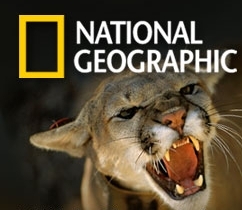The best photos from National Geographic December 2011.
Snorkeler, Thailand
Photograph by Nick Kelly, My Shot
I headed out to Thailand from Los Angeles for an adventure, partly to study Muay Thai and partly to find myself in a crazy place. This was one of many photos off the coast of Koh Tao in Thailand, near Koh Phangan, where I trained. A fish just happened to steal the shot.
Santorini, Greece
Photograph by C.T. Feng, My Shot
I went to Santorini toward the end of the season last year, when most of the shops on the island started shutting down for the winter. I wanted to get a nice twilight shot of the often photographed Oia. I used the meter on the camera to expose the shots, but it was consistently darker than what I had hoped for. So for the heck of it, I just left it exposed as long as possible, and the color just took on a life of its own and the town became a beautiful model doll. October 2007
Polar Bear, Norway
Photograph by Michael Nolan, Your Shot
A curious female polar bear approaches the Lindblad Expeditions ship National Geographic Explorer in Svalbard, Norway.
Storm Clouds, Nushagak Bay
Photograph by Michael Melford, National Geographic
Storm clouds gather over Nushagak Bay, where a tempest is raging over the proposed Pebble mine. Fishermen say it could ruin salmon runs. Mine owners promise jobs and an infusion of money.
Kayakers, Land’s End
Photograph by Ralph Lee Hopkins, National Geographic
Kayakers navigate the waters around Land’s End in Cabo San Lucas, a popular tourist destination at the southern tip of Mexico’s Baja California peninsula. The continued coastal development of the nature-rich finger of land has raised questions about possible environmental damage.
Sand Dunes, Australia
Photograph by Nicki Chen, Your Shot
The east of Lancelin town is bordered by endless snow-white sand dunes, which are heaven for sand boarders. The peaks of these sand dunes give a spectacular panoramic lookout over the township, surrounding sand hills, farmlands, coastline, islands and ocean.
Point Reyes, California
Photograph by Anton Barmettler, My Shot
Point Reyes, California, near the top of the cliff, under fog. The windswept trees forming a kind of tunnel, the sun piercing through the upper layer of the fog and the limited visibility provide for a very special effect. It appears quite unreal. Kind of spooky, especially considering that there were very few people around.
Badwater Basin, Death Valley
Photograph by Dan Desroches, My Shot
This was taken in Death Valley at a location named Badwater, a dry sea of salt below sea level.
Surfer, South Africa
Photograph by Anne du Plessis, My Shot
This photo was taken in Elandsbaai, South Africa. This surfer is waiting for the set waves to pass before paddling out into some big swell.
Megiddo
Photograph by Greg Girard, National Geographic
Tourists explore Megiddo, an ancient city north of Jerusalem where archaeologists found ruins of a palace and stables—evoked by a metal horse sculpture. They were first attributed to Solomon, but evidence now suggests the stables were built at least a century after the Bible says he died.
 Explore an unparalleled treasury of iconic images and groundbreaking photography in National Geographic Image Collection, 2010 People's Voice Webby Award Winner.
Explore an unparalleled treasury of iconic images and groundbreaking photography in National Geographic Image Collection, 2010 People's Voice Webby Award Winner.The best photos December 2010.
The National Geographic Society (NGS), headquartered in Washington, D.C. in the United States, is one of the largest non-profit scientific and educational institutions in the world.
Its interests include geography, archaeology and natural science, the promotion of environmental and historical conservation, and the study of world culture and history.
The National Geographic Society’s logo is a yellow portraitframe - rectangular in shape - which appears on the margins surrounding the front covers of its magazines.

Custom Search












Comments
Post a Comment